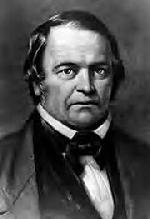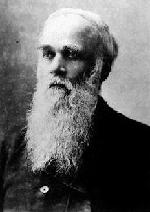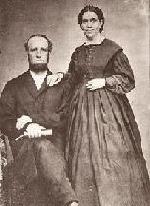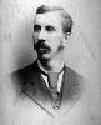HISTORY OF THE FREE SDA MOVEMENT
|
|
(The following are excerpts that are drawn from the manuscripts of a book currently being written by Pastor Patrick Herbert, dealing with the history of Free Seventh-day Adventists. Pastor Herbert is the senior pastor of Berean Church of Free SDA and is chairman of the Executive Committee of the International Association of Free Seventh-day Adventists.)
THE BEGINNING OF THE COLORED WORK
In this section we shall consider the circumstances that led up to the birth and development of the Free Seventh-day Adventist movement. To better understand how and when Free Seventh-day Adventists came into existence, we must first take some time to focus on a part of Adventist history that deals with the work that was done for and by colored members of the Adventist church in the early years of its existence. Therefore, let us now take a close look at some aspects of the history of the Seventh-day Adventist Church that will provide us relevant information on the origin of the Free Seventh-day Adventist movement.
|
 |
| William Miller |
|
When the Adventist movement began in the early 1800s blacks were included among the foundational members of the church. This fact can be seen in the historical records of the Seventh-day Adventist Church. Church historians unequivocally show that in the 1830s there were black “adherents of the Adventist (Millerite) movement.” 1 In the 1840s a man by the name of William Ellis Foy, who was described as “a tall light-skinned colored man,” received more than one vision directly “relating to the near advent of Christ and to last day events.” 2 Foy received his first vision in the year 1842. However, one of the reasons he later gave for his unwillingness to share his visions with others was, as he put it, “the prejudice among the people against those of my color.” 3 Another early Adventist by the name of Hazen Foss also had the opportunity to reveal God’s end time message to the Advent people. Foss was given his first vision in the autumn of 1844, but his response and experience mirrored that of Foy’s before him. Both of these men were called of God before Ellen G. White was given her first vision in December of 1844, which started the beginning of her work in the Seventh-day Adventist Church.
|
 |
| Hazen Foss |
|
To understand the difficulties that were faced by Foy and the colored church members in the developing years of the church, one must closely examine the racial climate that then existed. In the early days of Adventism, while there was some “prejudice against those of [their] color” at the time, it certainly was not as prevalent as it became in later years.4 The historical records of the church reveal that since racial discrimination was not as predominant in the northern states as it was in the South, in its formative years the initial stand of the church regarding race was of such that it could be said that “SDA leaders in the beginning were identified as antislavery in sentiment.” 5 In those days when church race relations were good, history records that in the northern states blacks “would naturally be members of the same churches with white people.” 6 However, as the church membership grew and new converts came into the church, unfortunately racism began to show its evil face within the walls of the remnant church. One of the reasons this happened was due to the fact that the church’s members began to consist “largely of white people from mainline denominations where blacks traditionally had been denied membership.” 7 Therefore, when these new converts joined the church, prejudice and segregation began to be increasingly practiced and eventually became a matter of church policy.
Nevertheless, the spirit of evangelism was very greatly promoted and the Seventh-day Adventist Church grew. The Three Angels’ Messages were advanced through preaching, teaching, printing, and literature distribution. Unfortunately, however, even then there existed an area of great neglect on the part of leaders of the Adventist organization. Men in responsible positions failed miserably in their commission to introduce God’s truths to His people of “every nation, and kindred, and tongue, and people” (Rev. 14:6). This negligence was especially obvious in respect to their dealing with those who lived in their own country in the southern states of the United States of America. But the prophetess to the Adventist church often reminded both the leaders and members of their Christian duty to all people, including the colored people in the South. This she wrote about extensively as the problem got worse and worse over time.
“God cares for the colored people, and if we would cooperate with Him for the salvation of their souls, we must care for them, too, and become laborers together with Him. We need to repent before God, because we have neglected missionary work in the most abandoned part of God’s moral vineyard. There needs to be a stirring up among the members of our churches. There needs to be concern created for our colored brethren at the great heart of the work. We should rouse up to the interest that true Christians ought to feel for those who are depressed and morally degraded. The fact that their skin is dark does not prove that they are sinners above the white race. Much of their depravity is the fruit of the neglect of the white people. They have not felt the sympathy that they ought to have felt for the abandoned and wretched. Those who profess to love Christ should have worked for their colored brethren until hope would have sprung up in their hearts. Many are completely discouraged, and they have become stolid because they have been neglected, despised, and forsaken. The poor and unfortunate are numbered by thousands, and yet we have looked on indifferently, and seen their sorrow, and have passed by on the other side. Their degraded condition is our condemnation. The Christian world are guilty because they have failed to help the very ones who most need help. Christ says, ‘I am not come to call the righteous, but sinners to repentance.’” 8
|
 |
| James & Ellen White |
|
As
a result of the encouragement and the repetitive counsels given by God
through His servant, Ellen G. White, a co-founder of the Seventh-day
Adventist organization, plans were eventually put into operation to
share the Adventist message with colored people in the southern states
of the United States of America. Such a venture was entered upon at a
time when colored people were very much oppressed and neglected, and
this condition of things was especially prevalent and prominent in the
South. Again and again Ellen White spoke out on this serious
and disturbing matter, stating, “Sin rests upon us as a church because
we have not made greater effort for the salvation of souls among the
colored people” and “the way this matter has been treated by some is an
offense to God.” Also, as far as interracial worship in general was
concerned, Ellen G. White made it clear to church leaders that they had
“no license from God to exclude the colored people” from their “places
of worship” and further declared, “Treat them as Christ's property,
which they are, just as much as yourselves. They should hold membership
in the church with the white brethren.” 9 This messenger to the church
reiterated time and time again, “The Lord has looked with sadness upon
the most pitiful of all sights, the colored race in slavery. He desires
us, in our work for them, to remember their providential deliverance
from slavery, their common relationship to us by creation and by
redemption, and their right to the blessings of freedom.” 10
|
 |
| Edson White |
|
It
was not until some years later this work was really started in the
South, amidst the unfortunate and difficult circumstances that then
existed. However, through the power of the Holy Spirit, those who
pioneered this work were very effective and many colored people
accepted the Adventist message in the South. Among those who took on
this unpopular task was Ellen White’s own son, James Edson White. At
the end of the nineteenth century, this brave young man was led to step
out as a pioneer of this unpopular work aboard The Morning Star boat.
He was not afraid to leave the confines of his familiar surroundings and fearlessly answer the call to work in behalf of the colored
people in the South. Edson moved forward undaunted by this very
difficult task out of pure love for his fellow man. Of his successful
labors many things have been said and articles written.
“The
Morning Star was built on the banks of the Kalamazoo River at Allegan,
Michigan, in 1894, just after Edson’s reconversion. It was his
ambition, and the ambition of his close friend Will Palmer, to open up
a work among the blacks in the Deep South. The boat would provide
transportation along the twisting waterways of the Mississippi and its
tributaries, as well as house the workers and furnish a portable
meeting place for the people.” 11
His mother, Ellen G. White,
wrote years later, “From the many remarkable and interesting
experiences that Edson and his associates have had on The Morning Star,
and because of the part it has acted in an important and blessed work,
Edson has regarded it as different from an ordinary piece of property,
and so have I.” 12
Due to Edson White’s work on The Morning Star
boat and the earnest efforts of others who also labored in this
previously neglected southern field, the Adventist work in the southern
states grew rapidly. God richly blessed these labors and many notable
black ministers and evangelists were raised up in the Seventh-day
Adventist Church. A well-known black leader and author in the Adventist
Church, W. W. Fordham, mentions the following prominent black leaders
who labored earnestly to share the Adventist message among those of
color:
“In 1894 there were approximately 50 Colored Seventh-day
Adventists in the United States. With additional Colored leadership,
the work began to develop under the strong evangelistic preaching of
such men as L. C. Sheafe, John Manns, Sidney Scott, J. K. Humphrey, J.
H. Laurence, G. E. Peters, P. C. Rodgers, M. C. Strong, T. B. Buckner,
J. M. Campbell, M. G. Nunez, B. W. Abney, H. D. Green, J. G. Dasent,
and John Allison.” 13
These men mentioned above, along with
others who joined the church in later years, such as Walter W. Fordham,
Charles E. Dudley, Charles E. Bradford, E. Earl Cleveland and Charles
D. Brooks, became influential leaders among the colored people in the
Seventh-day Adventist Church. Through the powerful and effective labors
of these dedicated and hard-working Adventist preachers the Three
Angels’ Messages were spread and many people of color joined the
Seventh-day Adventist Church in different parts of the United States,
the Caribbean, and in other parts of the world.
However, despite
the great successes and achievements of the black leaders in the latter
years of the Seventh-day Adventist Church, it is very important for us
to consider the experiences of the black Adventist leaders who came
before them. Those who came into the Adventist church in the early
years when new church policies were introduced. These new church
policies precipitated major changes in human relations within the
church and caused serious problems that later resulted in divisions
arising in the denomination and eventually the birth of the Free
Seventh-day Adventist movement.
1. Seventh-day Adventist
Encyclopedia, Revised Edition, Commentary Reference Series, Vol. 10,
Review and Herald Publishing Assoc., Washington, D.C. 1976, page 1192
2. Ibid, page 474
3. Ibid, page 475
4. Ellen G. White: The Early Years, by Arthur L. White, Vol. 1 - 1827-1862, Appendix B, (1985), page 489
5.
Seventh-day Adventist Encyclopedia, Revised Edition, Commentary
Reference Series, Vol. 10, Review and Herald Publishing Assoc.,
Washington, D.C. 1976, page 1192
6. Ibid
7. We Have Tomorrow, by Louis B. Reynolds, Review and Herald Publishing Assoc., Washington D.C., 1984, page 302
8. The Southern Work, by Ellen G. White, Review and Herald Publishing Assoc., Washington, D.C., 1966, page 35
9. Ibid, page 15
10. Testimonies For The Church, Vol. 7, by Ellen G. White, Pacific Press Publishing Assoc., Boise, Idaho, 1948, page 223
11.
Ellen G. White: The Early Elmshaven Years, by Arthur L. White, Review and Herald Publishing Assoc., Hagerstown, MD, 1981,
Vol. 5, p. 60
12. Manuscript Releases, by Ellen G. White, E. G. White Estate, Inc., Silver Spring, Maryland, Vol. 3, 1993,
page 270.
13. Righteous Rebel, by W. W. Fordham, Review and Herald Publishing Assoc., Washington, D.C., 1990, page 134
|
|